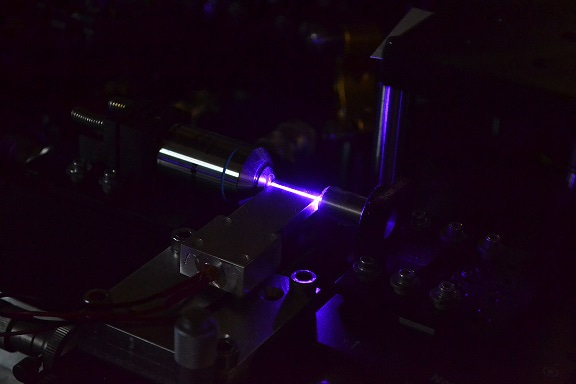
Ultraviolet (UV) radiation identifies the region of the electromagnetic spectrum where wavelengths are longer than those of X-rays. The extreme UV (XUV) range identifies light with a wavelength around 10 nm and up to 100 nm; far-UV and middle-UV regions are characterised by wavelengths between about 100 nm and 200 nm and between 200 nm and 300 nm, respectively. Near-UV radiation extends to around 400 nm, which is commonly taken as the lower value for visible wavelengths. You may wonder – why should one bother to label these intervals so diligently? While the precise boundaries of these ranges are not set in stone, the UV region peculiarly spans two different orders of magnitude in wavelength (or, equivalently, in frequency): the fastidious labels for each sub-region are there to remind us that the features and applications of light in the longer-wavelength near-UV region are distinct from those characterising short-wavelength XUV radiation, for example.

If you check the label on your sunscreen, this will probably read “UVB protection” or “UVB and UVA protection” – and it just so happens that UVB and UVA identify wavelengths ranges which almost coincide with the middle- and near-UV regions, respectively. Of all kinds of UV light, UVB and UVA rays are the ones that penetrate the deepest into human skin – with its longer wavelength, UVA light reaches all the way into the epidermis and the dermis. Therefore, it is important to protect our skin from these rays: overexposure to UVA and UVB radiation – including tanning beds – is now known to increase the risk of developing various forms of skin cancer. On a more positive health-related note, light in the UVB region is instrumental to the activation of vitamin D in the organism, and is thus crucial for calcium absorption.
Let’s put aside the interaction of light with our human bodies and look instead at what happens when light interacts with media such as a crystal slab or a gas. Under specific conditions, it is possible to observe a variety of so-called nonlinear interactions between these states of matter and electromagnetic radiation: nonlinear frequency conversion, for instance, describes processes whereby shining light at a given wavelength through a crystal produces an output radiation at a different wavelength. An ‘extreme’ form of nonlinear frequency conversion involves the interaction between an intense, focussed laser pulse (which has a fixed temporal duration, as opposed to the continuous light beam produced by a laser pointer) and a gas, resulting in the generation of light at high multiples of the optical frequency of the original pulse: this process, known as high harmonic generation, has proven incredibly successful for obtaining short laser pulses in the XUV range. These short pulses, which have durations around and below 100 attoseconds (where an attosecond equals one quintillionth of a second), can be turned into probes for the study of physical phenomena taking place on the same temporal scale – think of a very fast camera capturing the dynamics of electrons in matter, for example. Ultraviolet? Ultrafast, too.


Please sign in or register for FREE
If you are a registered user on Research Communities by Springer Nature, please sign in